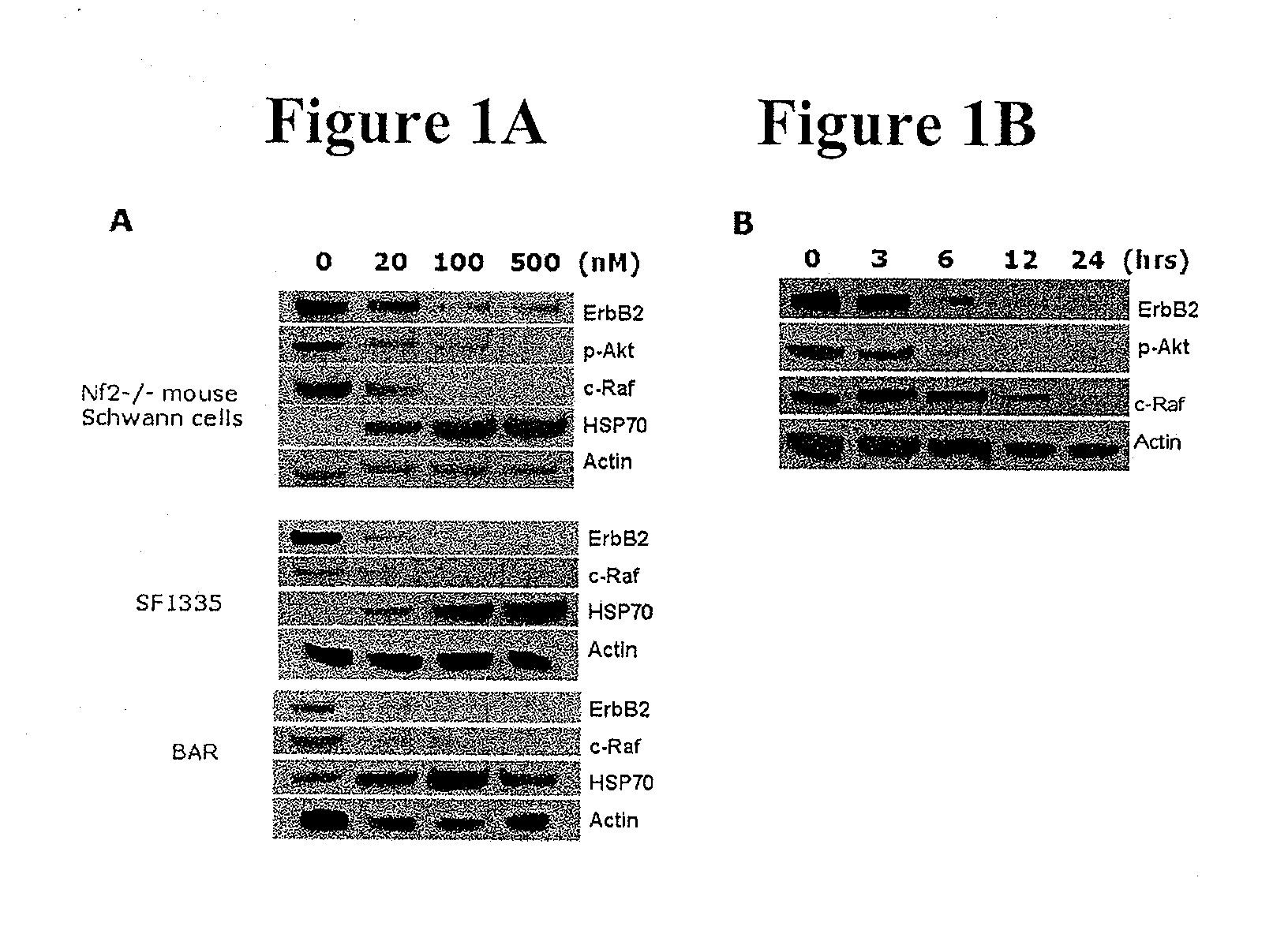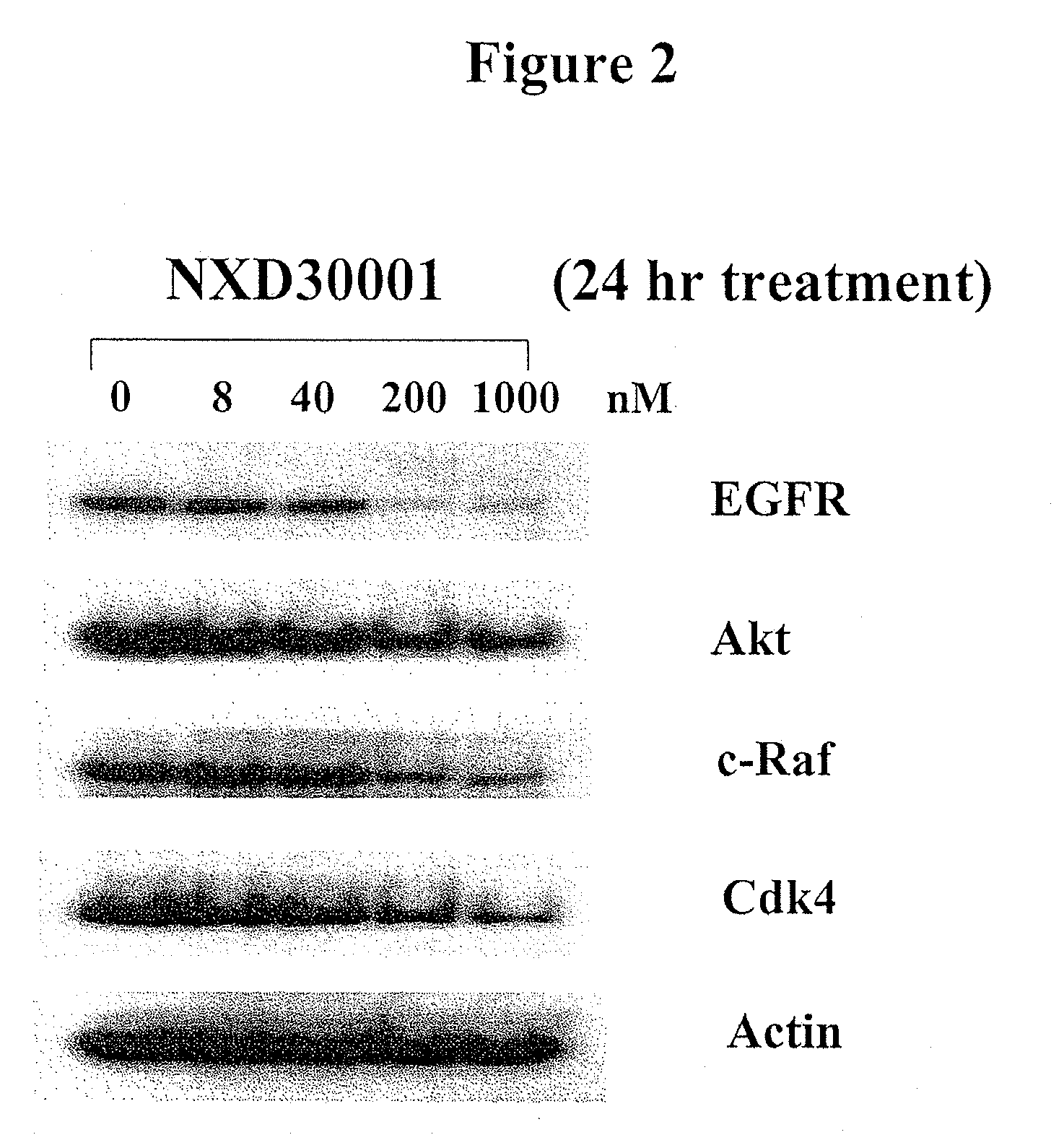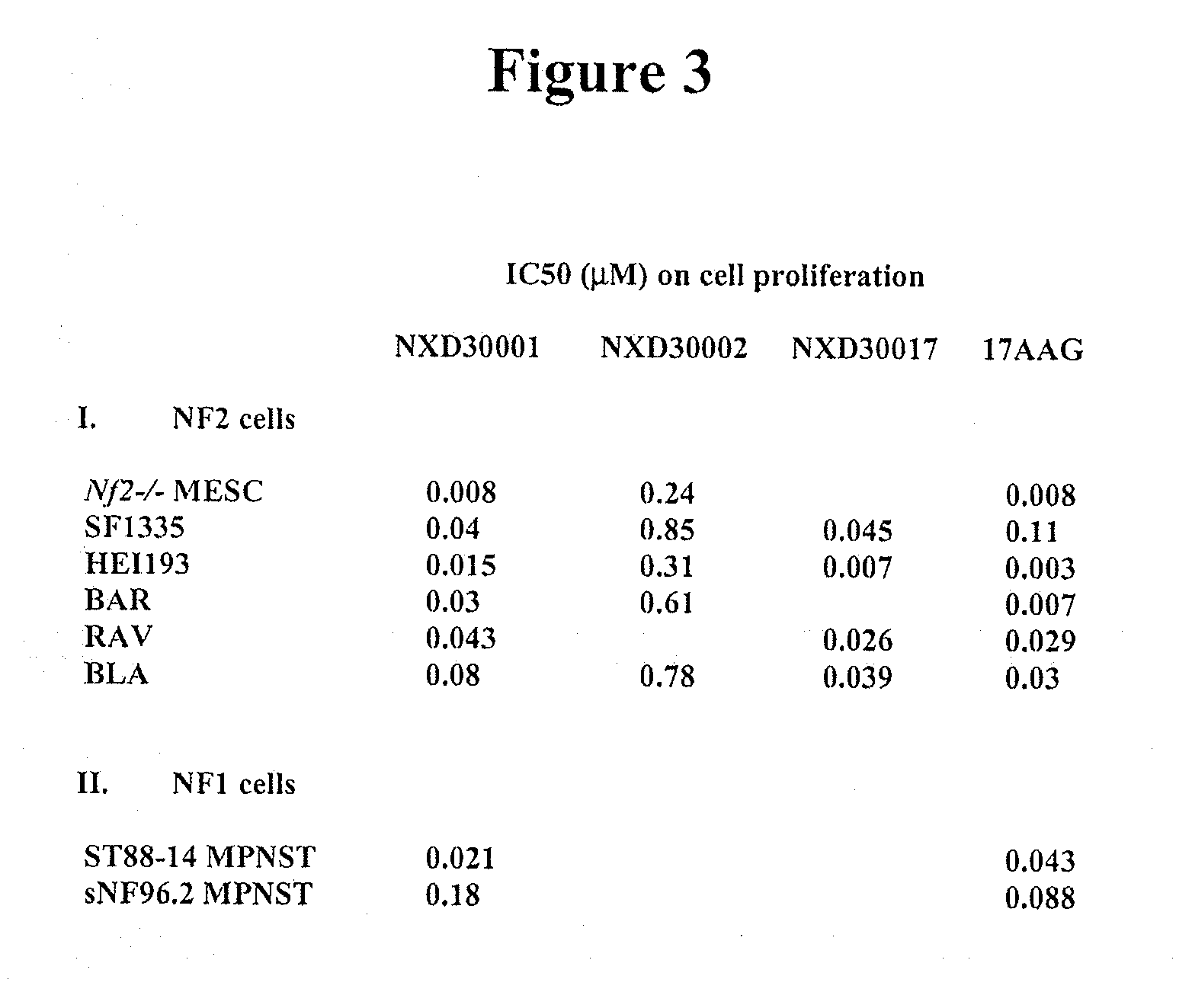Treatment Of Neurofibromatosis With Radicicol And Its Derivatives
a neurofibromatosis and derivative technology, applied in the field of radicicol and its derivatives, can solve the problems of increased risk of mesothelioma in nf2 patients, inappropriate phosphorylation and activation of pak, and inability of merlin to directly control the cell cycle machinery, etc., to inhibit or reduce the growth or number
- Summary
- Abstract
- Description
- Claims
- Application Information
AI Technical Summary
Benefits of technology
Problems solved by technology
Method used
Image
Examples
example 1
General Procedure for the Synthesis of Compounds 4
[0649]As depicted in Scheme 1, a solution of acid 2-95A or 2-95b (1.0 equiv), homoallylic alcohol (1.0 equiv) and tris-(3-chlorophenyl)phosphine (2.0 equiv) in anhydrous toluene (0.05 M) was treated at room temperature with PS-DEAD (2.5 equiv, 1.3 mmol g−1). After stirring for 10 min, the reaction mixture was filtered on silica and washed with hexane / EtOAc (10 / 1, 100 ml) and hexane / EtOAc (3 / 1, 100 ml). The 3 / 1 mixture was concentrated under reduced pressure to yield compound 3 (60-80%). Without further purification, compound 3 (1.0 equiv) and tetrabutylammonium iodide (catalytic amount) were dissolved in DMF (0.15 M) and treated with diisopropylethylamine (4.0 equiv) and (chloromethyl)ethyl ether (4.0 equiv). After stirring overnight at 80° C., the reaction mixture was diluted with EtOAc and washed several times with a saturated NH4Cl solution. The organic phase was dried over MgSO4 and concentrated under reduce pressure to yield com...
example 2
General Procedure for the Synthesis of Compounds 2-118, 2-119 and 2-140
[0652]As depicted in Scheme 1, a solution of compound 2-110 or 2-117 (1.0 equiv) in anhydrous THF (0.2 M) was treated at −78° C. with freshly made LDA (2.0 equiv). Immediately after, the α,β-unsaturated Weinreb amide (S. V. Ley and I. R. Baxendale, Nat. Rev. Drug Discov., 1:573 (2002)) was added to the cooled solution (1.0 equiv). The resulting mixture was then stirred for 10 min at −78° C. and quenched by addition of Amberlite® resin (20 equiv). Upon warming up to room temperature, the reaction was filtered on a pad of silica and washed with EtOAc. Concentration under reduced pressure afforded the desired compound 5. This compound was used directly in the metathesis reaction without any further purification. When X═H, 20% of the corresponding 1,4-addition compound was observed and a fraction of the mixture was purified for characterization of compounds 5 and 7 (SiO2, 0-20% EtOAc / cyclohexane gradient). Illustrati...
example 3
General Procedure for the Metathesis Reaction
[0659]As depicted in Scheme 1, a solution of crude 2-118 or 2-119 (or mixture 2-118 / 2-119 and 2-140 when X═Cl), in anhydrous toluene (2 mM) was treated with Grubbs' second generation catalyst (0.10 equiv) and heated at 80° C. for 12 h. The reaction was cooled down to room temperature and the mixture was filtered through a pad of SiO2, washed with CH2Cl2 followed by a mixture EtOAc / cyclohexane 1 / 1 and concentrated under reduced pressure. Purification by flash chromatography (SiO2, 0-25% EtOAc / cyclohexane gradient) afforded compounds 2-112 or 2-120 or 2-140 (60-85% over two steps). Illustrative examples of compounds 2-112 or 2-120 and 2-140 follow; their characterization follows respectively in the text below each figure.
[0660]Illustrative Compounds 2-112 / 2-120:
[0661]NMR (CDCl3, 400 MHz, 25° C.) δ 7.14 (s, 1H), 6.72-6.66 (m, 1H), 5.88 (d, J=15.2 Hz, 1H), 5.33-5.17 (m, 6H), 4.92-4.88 (m, 1H), 4.21 (d, J=17.0 Hz, 1H), 3.92 (d, J=17.0 Hz, 1H),...
PUM
| Property | Measurement | Unit |
|---|---|---|
| Volume | aaaaa | aaaaa |
| Volume | aaaaa | aaaaa |
| Molar density | aaaaa | aaaaa |
Abstract
Description
Claims
Application Information
 Login to View More
Login to View More - R&D
- Intellectual Property
- Life Sciences
- Materials
- Tech Scout
- Unparalleled Data Quality
- Higher Quality Content
- 60% Fewer Hallucinations
Browse by: Latest US Patents, China's latest patents, Technical Efficacy Thesaurus, Application Domain, Technology Topic, Popular Technical Reports.
© 2025 PatSnap. All rights reserved.Legal|Privacy policy|Modern Slavery Act Transparency Statement|Sitemap|About US| Contact US: help@patsnap.com



